Breaking Tradition: The tale of a huntress
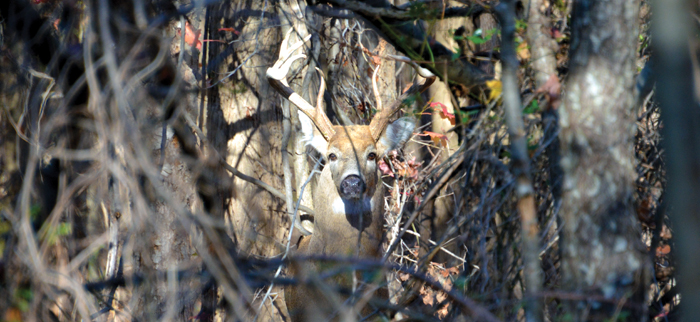
Kent Island deer; by Douglas E. George
If someone asks you to envision what a typical hunter looks like, the first image that comes to most peoples’ mind is that of a man in the woods decked out in camouflage with a shotgun poised for the hunt. Why not a woman?
I’m a woman and I still picture a man with a gun in the woods. This image has been embedded into my brain since childhood—it’s what we have been told and taught.
It’s time now to break tradition.
To steal a line from sharpshooter Annie Oakley in the musical Annie Get Your Gun, “I can do anything you can do better!” Maybe I can’t do everything better, but I can hunt just as well.
Other women appear to agree.
According to a national five-year census conducted by the U.S. Fish and Wildlife Service, females are gaining momentum in this pursuit, recreationally and economically.
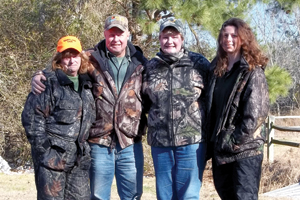
Patricia (right) and friends
Deer tale
Hunting has become a passion of mine and many of my peers. It’s an opportunity to experience nature in a wild and totally natural setting that is also part of our history and heritage.
I remember growing up where the boys told stories of their hunting experiences and the girls just sat there listening. But me? I envied their tales. In my hometown, Richfield Springs, New York (dairy farm country) it was unusual for a girl to go, and I’m from a non-hunting family. So, the possibility of hunting as a young person was slim to none.
It wasn’t until adulthood that a friend and mentor took me and three other women deer hunting. I was ecstatic, nervous and scared. I didn’t own any of my own equipment, so I had to borrow what I needed. After all, I didn’t know if I’d actually like it.
We headed to Snow Hill on the Eastern Shore. Once there, I sat in a blind with my gun at the ready. I sat and sat for what felt like hours, waiting for a deer to come out of the loblolly pine forest and into my shooting lane.
I finally started to relax and just enjoy my surroundings, watching the birds, the squirrels and the falling snow. Then, a doe appeared out of nowhere at the end of the lane, about 175 yards away. I slowly aimed the rifle and looked through the scope. I was shaking so badly with excitement that I wasn’t sure I could make the shot. I slowed my breathing and thought, “You can do this!”
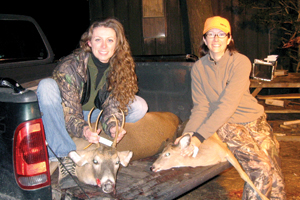
Deer hunt
The shaking ceased and the doe was still in sight. I took aim, slowly let out a breath and squeezed the trigger.
BANG!
After putting the safety on the gun and setting it down carefully, I grabbed my binoculars (the one piece of equipment that was actually mine) to see if I had gotten my first deer.
I did!
Shaking again, this time from the adrenaline, I grinned from ear to ear. Everyone on our trip shared my elation. The women greeted me with high fives and bear-sized hugs of congratulations. I had harvested my first deer, and I was hooked.
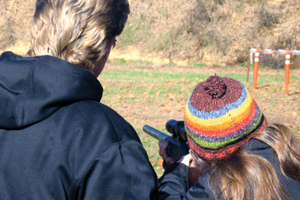
Target practice
BOW-ing to women
What does the state do to encourage women to hunt? The Department of Natural Resources coordinates a program specific to those who are open-air enthusiasts. Maryland’s Becoming an Outdoors-Woman (BOW) offers outdoor skills workshops specifically for women 18 years of age and older. (Men are also welcomed).
The workshops enable women to learn about a wide variety of outdoor recreational opportunities in a casual, non-threatening environment. Designed to be as hands-on as possible, the classes give participants enough knowledge to further pursue their interests. Extended Beyond BOW programs focus on specific activities, including two hunting clinics: goose and deer.
The department has facilitated quality outdoors experiences to more than 4,000 women since the program began in Maryland in 1995.
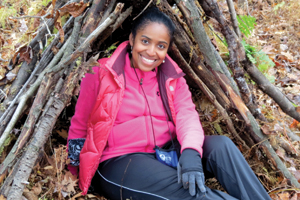
Building shelter
Conserving wildlife
New hunters and shooters—whether male or female—not only increase participation in the sport, but also help with conservation. Many people don’t realize that it’s the hunters and shooters that support most of the wildlife conservation programs in our state.
The majority of financial support comes from licenses and fees, and federal funds such as Wildlife Restoration, which are derived from an excise tax on sporting arms and ammunition. These also serve as the main funding source for protecting endangered, rare and threatened species.
So when you see a North American porcupine waddling through the forest or a bald eagle soaring through the sky, thank a hunter.
And the next time you are in the woods and you spy a person clad in camo, look closely; it may be a member of the fairer sex taking aim at new opportunities!
Article by Patricia Allen—Wildlife and Heritage Service information and education specialist.
Appears in Vol. 18, No. 4 of the Maryland Natural Resource magazine, fall 2015.


 1-888-373-7888
1-888-373-7888 233733
233733